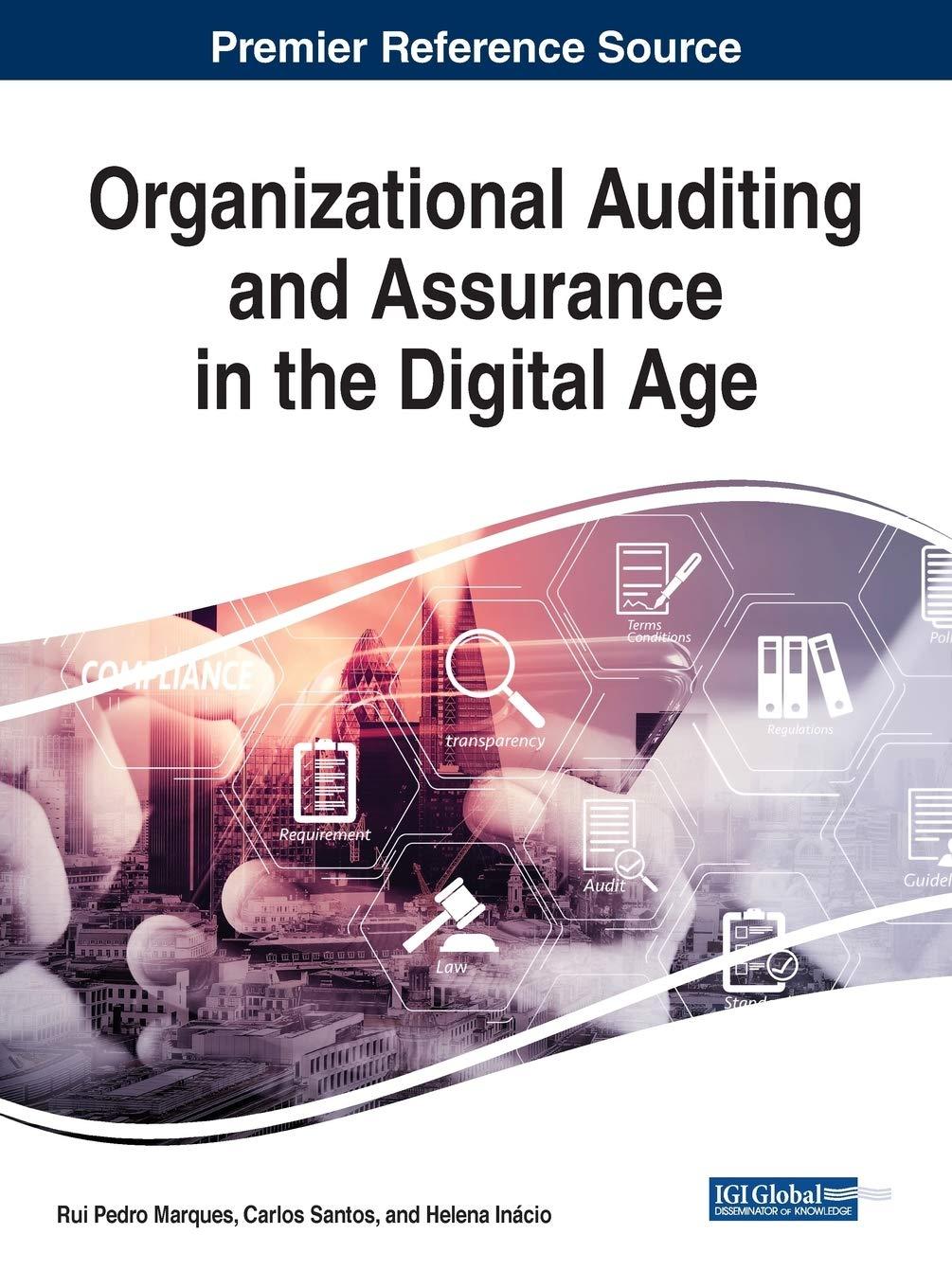Question
In the textbook, Business: Its Legal, Ethical, and Global Environment (10th Edition) is the case of Illinois Toolworks, Inc., at page 538 . This case
In the textbook, "Business: Its Legal, Ethical, and Global Environment (10th Edition)" is the case of Illinois Toolworks, Inc., at page 538. This case deals with tying arrangements which can come into play by suppliers.
Review the case and answer the following:
SYLLABUS OCTOBER TERM, 2005 ILLINOIS TOOL WORKS INC. V. INDEPENDENT INK, INC. SUPREME COURT OF THE UNITED STATES
ILLINOIS TOOL WORKS INC. et al. v. INDEPENDENT INK, INC.
certiorari to the united states court of appeals for the federal circuit
No. 041329.Argued November 29, 2005Decided March 1, 2006
Petitioners manufacture and market printing systems that include a patented printhead and ink container and unpatented ink, which they sell to original equipment manufacturers who agree that they will purchase ink exclusively from petitioners and that neither they nor their customers will refill the patented containers with ink of any kind. Respondent developed ink with the same chemical composition as petitioners ink. After petitioner Tridents infringement action was dismissed, respondent filed suit seeking a judgment of noninfringement and invalidity of Tridents patents on the ground that petitioners are engaged in illegal tying and monopolization in violation of 1 and 2 of the Sherman Act. Granting petitioners summary judgment, the District Court rejected respondents argument that petitioners necessarily have market power as a matter of law by virtue of the patent on their printhead system, thereby rendering the tying arrangements per se violations of the antitrust laws. After carefully reviewing this Courts tying-arrangements decisions, the Federal Circuit reversed as to the 1 claim, concluding that it had to follow this Courts precedents until overruled by this Court.
Held: Because a patent does not necessarily confer market power upon the patentee, in all cases involving a tying arrangement, the plaintiff must prove that the defendant has market power in the tying product. Pp. 317.
(a) Over the years, this Courts strong disapproval of tying arrangements has substantially diminished, as the Court has moved from relying on assumptions to requiring a showing of market power in the tying product. The assumption in earlier decisions that such arrangements serve hardly any purpose beyond the suppression of competition, Standard Oil Co. of Cal. v. United States, 337 U. S. 293, 305306, was rejected in United States Steel Corp. v. Fortner Enterprises, Inc., 429 U. S. 610, 622 (Fortner II), and again in Jefferson Parish Hospital Dist. No. 2 v. Hyde, 466 U. S. 2, both of which involved unpatented tying products. Nothing in Jefferson Parish suggested a rebuttable presumption of market power applicable to tying arrangements involving a patent on the tying good. Pp. 38.
(b) The presumption that a patent confers market power arose outside the antitrust context as part of the patent misuse doctrine, and migrated to antitrust law in International Salt Co. v. United States, 332 U. S. 392. See also Morton Salt Co. v. G. S. Suppiger Co., 314 U. S. 488; United States v. Loews Inc., 371 U. S. 38. Pp. 810.
(c) When Congress codified the patent laws for the first time, it initiated the untwining of the patent misuse doctrine and antitrust jurisprudence. At the same time that this Courts antitrust jurisprudence continued to rely on the assumption that tying arrangements generally serve no legitimate business purpose, Congress began chipping away at that assumption in the patent misuse context from whence it came. Then, four years after Jefferson Parish repeated the presumption that patents confer market power, Congress amended the Patent Code to eliminate it in the patent misuse context. While that amendment does not expressly refer to the antitrust laws, it invites reappraisal of International Salts per se rule. After considering the congressional judgment reflected in the amendment, this Court concludes that tying arrangements involving patented products should be evaluated under the standards of cases like Fortner II and Jefferson Parish rather than the per se rule in Morton Salt and Loews. Any conclusion that an arrangement is unlawful must be supported by proof of power in the relevant market rather than by a mere presumption thereof. Pp. 1113.
(d) Respondents alternatives to retention of the per se rulethat the Court endorse a rebuttable presumption that patentees possess market power when they condition the purchase of the patented product on an agreement to buy unpatented goods exclusively from the patentee, or differentiate between tying arrangements involving requirements ties and other types of tying arrangementsare rejected. Pp. 1416.
(e) Because respondent reasonably relied on this Courts prior opinions in moving for summary judgment without offering evidence of the relevant market or proving petitioners power within that market, respondent should be given a fair opportunity to develop and introduce evidence on that issue, as well as other relevant issues, when the case returns to the District Court. P. 17.
396 F. 3d 1342, vacated and remanded.
Stevens, J., delivered the opinion of the Court, in which all other Members joined, except Alito, J., who took no part in the consideration or decision of the case.
1. Did the court find a tying agreement here? Why or Why not?
2. Explain when and how you could tie a product to one of your other products without running afoul of the federal antitrust law
Step by Step Solution
There are 3 Steps involved in it
Step: 1

Get Instant Access to Expert-Tailored Solutions
See step-by-step solutions with expert insights and AI powered tools for academic success
Step: 2

Step: 3

Ace Your Homework with AI
Get the answers you need in no time with our AI-driven, step-by-step assistance
Get Started


